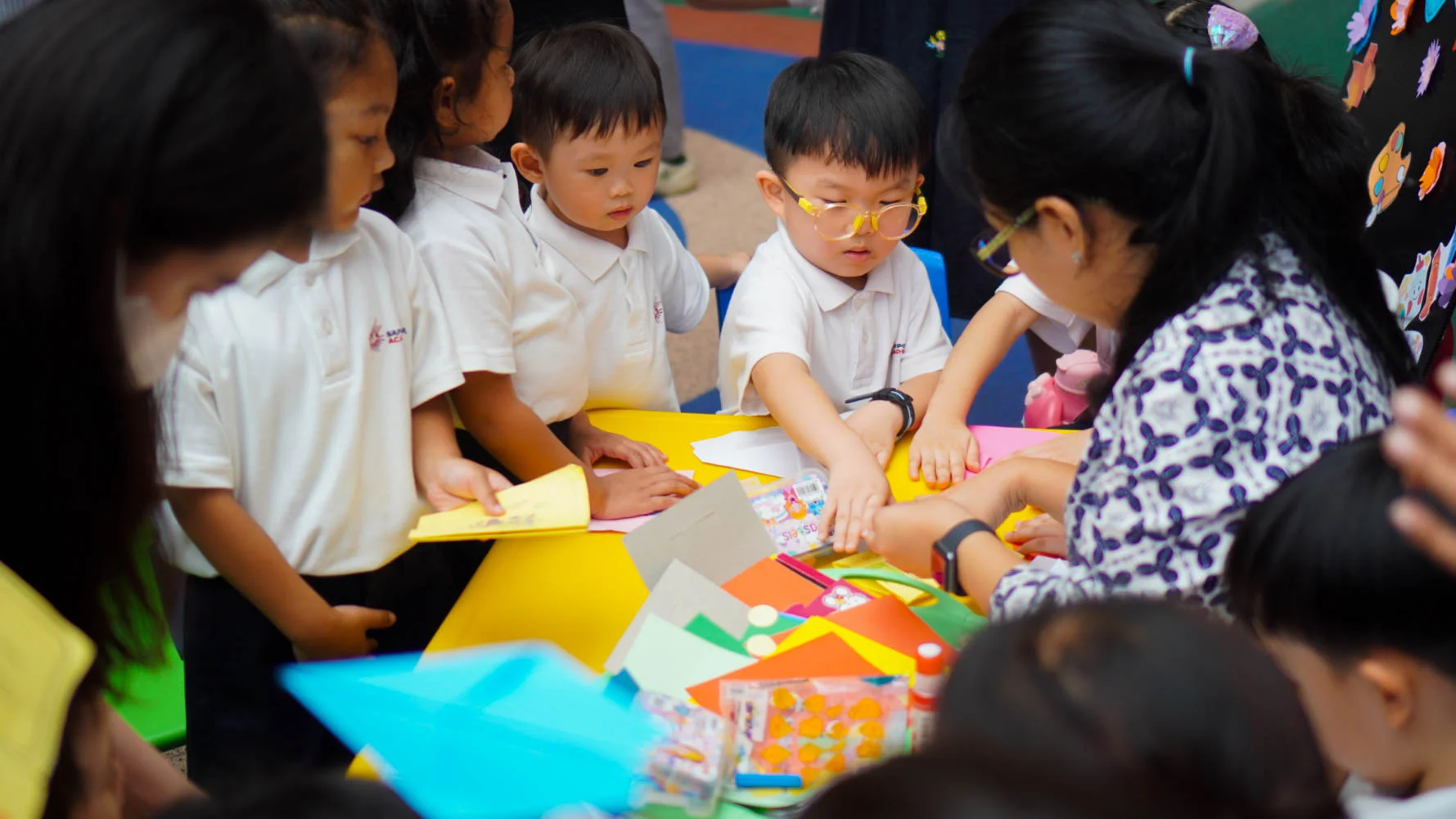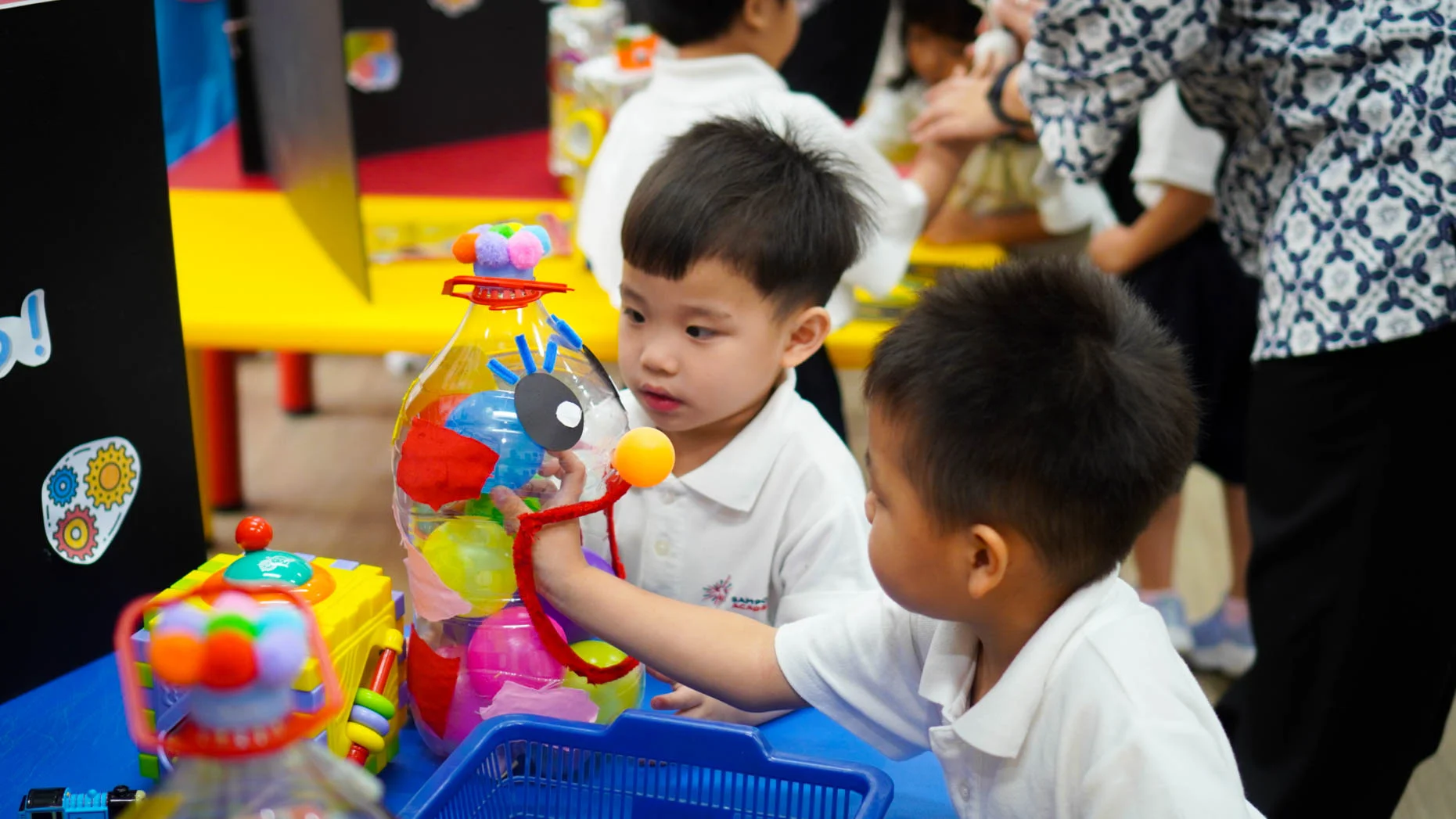The transition from Early Childhood Education (PAUD) to Elementary School (SD) is one of the most important stages in a child’s development. During this transition period, children experience a shift from a relaxed, play-based environment to a more formal academic setting.
From increased academic demands, new social interactions, to a different learning environment—all these changes can be challenging for children and may cause them to feel anxious, uncomfortable, or even reluctant to go to school.
If not handled well, this transition period can affect a child’s academic performance, behavior, and emotional well-being. So, what should parents prepare to help their child adjust smoothly during the transition from PAUD to SD? Find out in this article!
Common challenges during the transition
Before we discuss how parents can support their children during this transition, let’s take a look at some of the common challenges children may face during this period.
1. Separation anxiety
One of the biggest challenges during the transition from PAUD to SD is children’s anxiety about being separated from their parents. They may feel scared facing a new school environment and unfamiliar classmates.
The absence of their parents nearby can heighten their anxiety, especially during the first few weeks when they are still adjusting to their new routine. As a result, children may cry and refuse to be separated when parents drop them off at school.
2. Difficulty focusing in class
Moving from a play-based learning environment in PAUD to a more academic-focused SD setting can make it difficult for children to concentrate. Moreover, academic expectations in SD are much higher than in PAUD.
In SD, children are expected to sit for longer periods, follow teacher instructions, and pay attention to lessons. This can be challenging for children who are used to flexible, play-centered learning environments.
3. Struggling to socialize with peers
Building new friendships in SD can be a challenge for some children. While in PAUD they mostly played freely, in SD children must start learning to socialize in larger groups, engage in more complex social interactions, and follow stricter rules.
Additionally, every child has different levels of social skills, so some may struggle to adapt and interact with their peers.
4. Difficulty adjusting to a new routine
Compared to PAUD, the daily routine in SD is much more structured. Children have to wake up earlier, follow a busier schedule, and have set break times. This structured routine can be difficult for children to adjust to, especially if they are not used to having a regular daily schedule.
What can parents do to prepare?
1. Talk to your child about what to expect
The first step parents can take is to talk to their child about the changes that are coming. Explain in simple terms that they will be going to a bigger school with many new friends and exciting challenges. This will help them prepare mentally and emotionally.
2. Visit the new school
Taking your child to visit their new school before the academic year starts can help reduce their anxiety. They can see the classroom, playground, and even meet their teacher so they feel more familiar and comfortable when the first day arrives.
3. Strengthen their social and emotional skills
Before entering SD, it’s important to help children develop their social and emotional skills. Parents can encourage their children to play with peers, cousins, or neighborhood kids to help them learn how to share, take turns, and cooperate. These are important skills they’ll need when interacting with more friends in SD.
4. Teach independence
Teaching children to be independent is key to helping them face SD routines with more confidence. Encourage them to practice buttoning their clothes, putting on shoes, tidying up their toys, or eating by themselves. These skills will help them navigate school life without always relying on others.
5. Create a daily routine
Preparing children for SD routines can start even before the first day of school. Create a daily schedule that reflects the school routine, such as waking up earlier, having breakfast, study time, playtime, and setting a consistent bedtime. A structured routine will help children be more ready to face their days in SD.
6. Build your child’s confidence
Confident children will find it easier to adapt to new environments. Therefore, parents should encourage their child to try new things, praise their efforts, and teach them that it’s okay to make mistakes. With good self-confidence, children will be better prepared to face various challenges in SD.
Final thoughts
The transition from PAUD to SD is an important and challenging period for children. That’s why this transition requires special attention and preparation from parents.
Although children may still face difficulties, parents can help by providing understanding about the changes ahead, introducing them to their new environment, and building their social skills and independence.
By doing so, children will be more prepared and confident to face these changes. However, parents don’t need to go through this transition period alone.
Sampoerna Academy fully understands the importance of this transition stage and is committed to providing full support to every student. Our experienced teachers will guide each student individually to help them adapt to their new school environment.
In addition, we have a special transition program designed to help children adjust well to school. This program includes various fun and educational activities, such as school orientation, aimed at introducing children to their new school environment, teachers, and classmates.
With this approach, children can smoothly go through this transition period, feel more confident, and be ready to start a new adventure at Sampoerna Academy.


